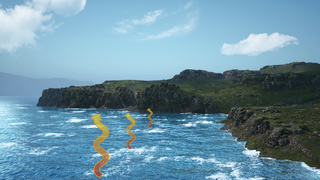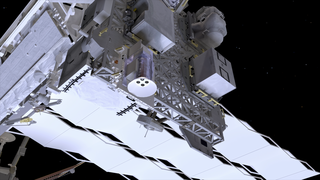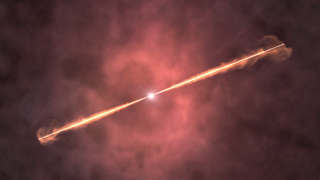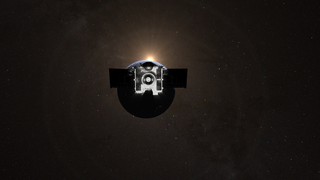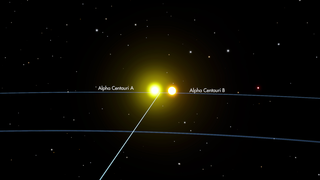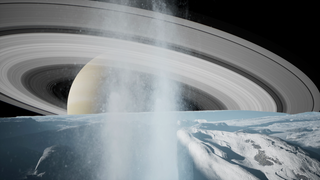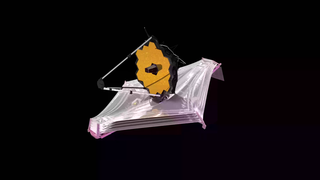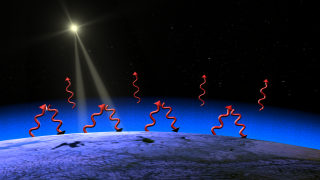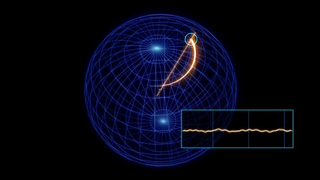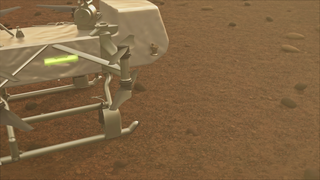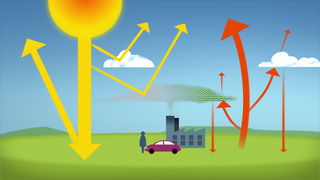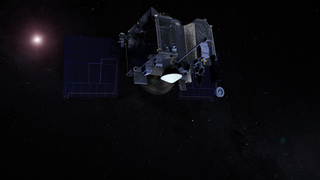Earth
ID: 20007
Carbon And The Ocean — The Slow Cycle - The oceans are vast, and their processes as complex as their waters are deep.Phytoplankton absorbs carbon dioxide from the atmosphere and nutrient rich waters and grows in wide colonies called blooms. These blooms are highly dependent on surrounding environmental conditions.
As phytoplankton grows, it forms the foundation for the food chain, thus passing carbon up to higher life forms. But just as on land, links in the ocean's chain of life also break, and stored carbon settles out of the top layers of water. A portion of it gets swept back to the surface as upwellings, only to begin again, but a major portion sinks to the bottom, becoming what oceanographers call 'marine snow.' This decomposing biological matter literally precipitates through the water and builds up on the ocean bottom, essentially sequestered from the rest of the Earth for geologically long periods of time.
Carbon Cycle
As phytoplankton grows, it forms the foundation for the food chain, thus passing carbon up to higher life forms. But just as on land, links in the ocean's chain of life also break, and stored carbon settles out of the top layers of water. A portion of it gets swept back to the surface as upwellings, only to begin again, but a major portion sinks to the bottom, becoming what oceanographers call 'marine snow.' This decomposing biological matter literally precipitates through the water and builds up on the ocean bottom, essentially sequestered from the rest of the Earth for geologically long periods of time.
Animation Credits
Susan Twardy (HTSI): Lead Animator
Gene Feldman (NASA/GSFC): Scientist
Michael Starobin (HTSI): Writer
Gene Feldman (NASA/GSFC): Scientist
Michael Starobin (HTSI): Writer
Please give credit for this item to:
NASA/Goddard Space Flight Center Conceptual Image Lab
NASA/Goddard Space Flight Center Conceptual Image Lab
Short URL to share this page:
https://svs.gsfc.nasa.gov/20007
Goddard TV Tape:
G2001-023
Keywords:
SVS >> Byrne
SVS >> Carbon Absorption
SVS >> Carbon Ocean Cycle
SVS >> Carbon Release
SVS >> Carbon Reserve
SVS >> Carbon Sink
SVS >> Gonnelli
SVS >> Marine Snow
SVS >> Phytoplankton
GCMD >> Earth Science >> Atmosphere
GCMD >> Earth Science >> Oceans >> Ocean Circulation >> Upwelling
NASA Science >> Earth
GCMD keywords can be found on the Internet with the following citation: Olsen, L.M., G. Major, K. Shein, J. Scialdone, S. Ritz, T. Stevens, M. Morahan, A. Aleman, R. Vogel, S. Leicester, H. Weir, M. Meaux, S. Grebas, C.Solomon, M. Holland, T. Northcutt, R. A. Restrepo, R. Bilodeau, 2013. NASA/Global Change Master Directory (GCMD) Earth Science Keywords. Version 8.0.0.0.0
https://svs.gsfc.nasa.gov/20007
Goddard TV Tape:
G2001-023
Keywords:
SVS >> Byrne
SVS >> Carbon Absorption
SVS >> Carbon Ocean Cycle
SVS >> Carbon Release
SVS >> Carbon Reserve
SVS >> Carbon Sink
SVS >> Gonnelli
SVS >> Marine Snow
SVS >> Phytoplankton
GCMD >> Earth Science >> Atmosphere
GCMD >> Earth Science >> Oceans >> Ocean Circulation >> Upwelling
NASA Science >> Earth
GCMD keywords can be found on the Internet with the following citation: Olsen, L.M., G. Major, K. Shein, J. Scialdone, S. Ritz, T. Stevens, M. Morahan, A. Aleman, R. Vogel, S. Leicester, H. Weir, M. Meaux, S. Grebas, C.Solomon, M. Holland, T. Northcutt, R. A. Restrepo, R. Bilodeau, 2013. NASA/Global Change Master Directory (GCMD) Earth Science Keywords. Version 8.0.0.0.0
